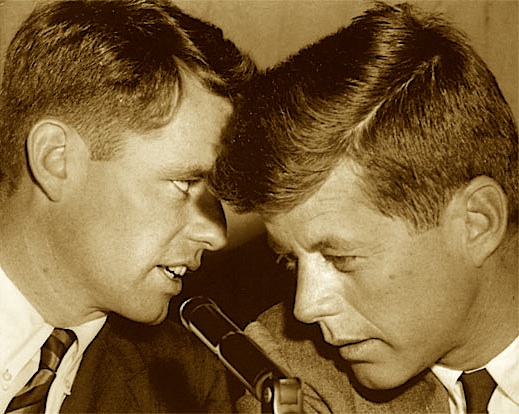Chasing Assassins
Bobby Kennedy died believing his brother’s killers had not been found
by Matthew Stevenson/THE TEXAS OBSERVER
Brothers: The Hidden History of the Kennedy Years
By David Talbot
Simon & Schuster
478 pages, $28
When President John F. Kennedy was gunned down in Dallas in November 1963, his younger brother Robert, then the U.S. attorney general, was having lunch at his home in northern Virginia. As recounted in Brothers, David Talbot’s stirring and troubling history of Bobby’s descent into the underworlds of conspiracy, word of the shooting reached him when J. Edgar Hoover, director of the FBI, telephoned. In a monotone, Bobby’s nemesis and wily subordinate said: “I have news for you. The president’s been shot.”
Hoover had long resented the intrusions of the 37-year-old attorney general into the lair of the FBI. Despite his rank in Washington’s civilian chain of command, Hoover had regarded the brothers Kennedy as just another couple of bootleggers on whom to run a file and maintain a stakeout. Of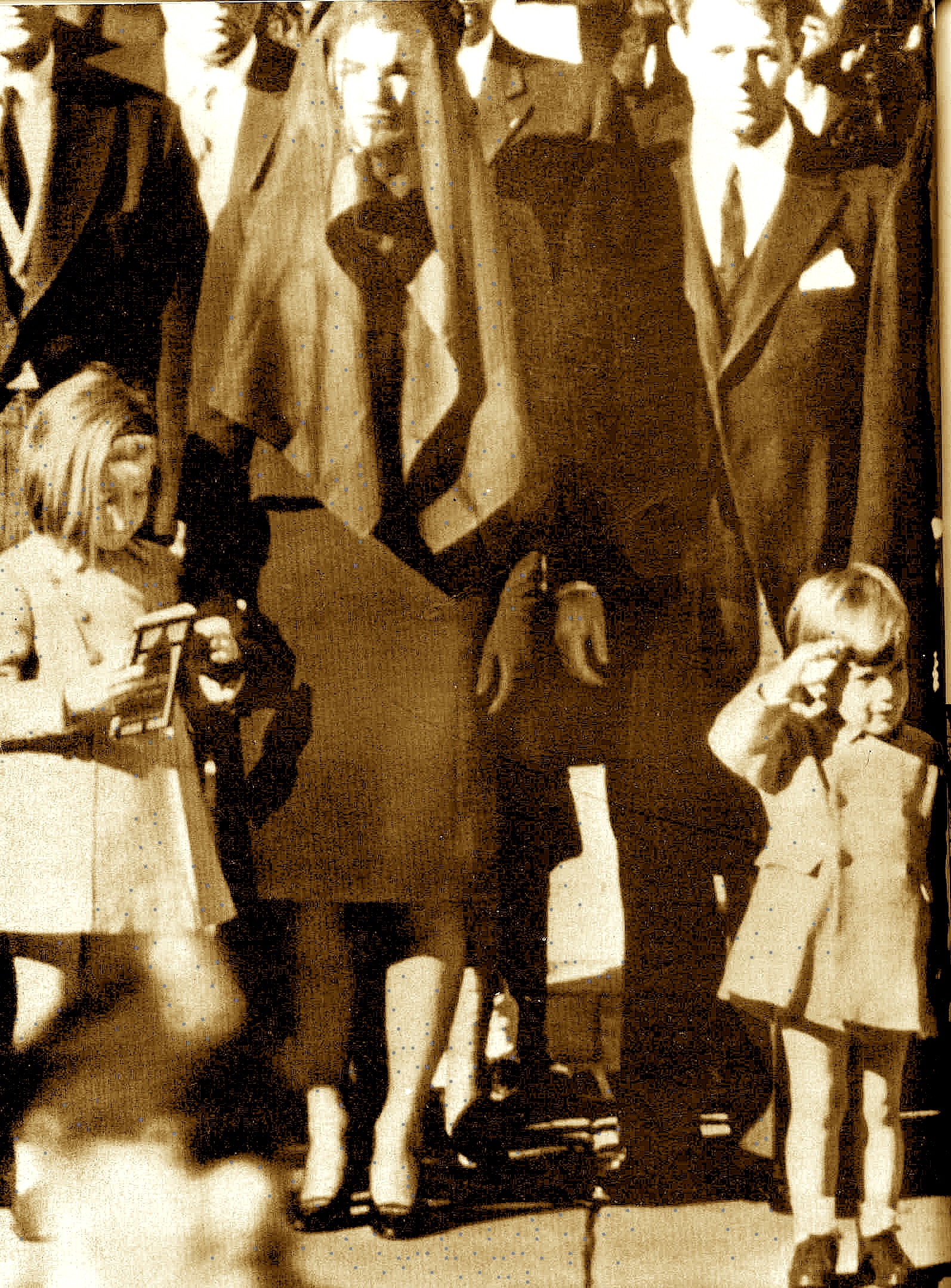 November 22, Talbot continues: “Twenty minutes later, Hoover phoned again to deliver the final blow: “The president’s dead,” he said and promptly hung up. Again, Kennedy would remember, his voice was oddly flat — “not quite as excited as if he were reporting the fact that he had found a Communist on the faculty of Howard University.” In the first of many messages that the assassination delivered to Robert Kennedy, this one from Hoover pointed out that the lifeblood of the attorney general’s political power had ebbed away in one of Parkland Hospital’s emergency rooms.
November 22, Talbot continues: “Twenty minutes later, Hoover phoned again to deliver the final blow: “The president’s dead,” he said and promptly hung up. Again, Kennedy would remember, his voice was oddly flat — “not quite as excited as if he were reporting the fact that he had found a Communist on the faculty of Howard University.” In the first of many messages that the assassination delivered to Robert Kennedy, this one from Hoover pointed out that the lifeblood of the attorney general’s political power had ebbed away in one of Parkland Hospital’s emergency rooms.
That November afternoon, between his shock, grief, and anger, Bobby Kennedy worked the phones. His political life in Washington had been spent either running his brother’s campaigns or investigating the grassy knolls of the Mafia, corrupt labor unions, and what an earlier attorney general, A. Mitchell Palmer, had called the Red Menace. He was on familiar ground. He spoke with Roy Kellerman, the Secret Service agent who had been in the limousine with the president. He spoke with Dave Powers and Kenneth O’Donnell, political aides to President Kennedy who were in the car behind the president’s when it rolled into Dealey Plaza. All of them used the words “ambush” or “a flurry of shots” to describe what had happened. Talbot writes: “O’Donnell and more than one Secret Service man would tell Bobby the same thing that day: They were caught in crossfire. It was a conspiracy.”
That evening, Bobby met Air Force One on its return from Dallas. He accompanied his brother’s body and widow to Bethesda Naval Hospital for what would turn out to be the most controversial autopsy in American history. Even before the assembled doctors bungled determining whether the President had been shot in the front or the back, Bobby had decided that it “was not a ‘he’ who had killed his brother — it was a ‘they.'” In Talbot’s most memorable phrase in a book of disturbing conclusions, the attorney general had become “America’s first assassination theorist.”
Just to be clear, Robert Kennedy never attended an annual gathering of assassination buffs or speculated about “Umbrella Man” or “Badge Man” or the “Three Tramps.” He did unleash his own investigative hounds, including the capable Walter Sheridan, who within 48 hours reported that Jack Ruby had received “a bundle of money” from Chicago mobsters with links to Jimmy Hoffa, the Teamsters union boss whom Bobby had tried for years to throw behind bars. Talbot writes: “Later, Kennedy would remark when he saw Ruby’s phone records, ‘The list was almost a duplicate of the people I called before the Rackets Committee.'” Talbot also concludes that both Jacqueline and Bobby believed JFK had been killed by “a large political conspiracy … Perhaps there was only one assassin, but he did not act alone.” They never suspected Castro or the Russians.
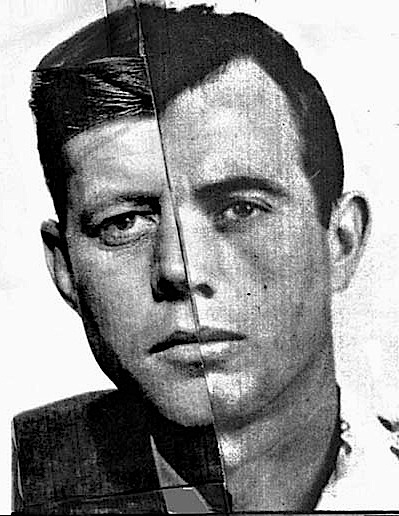 Talbot, founder and former editor in chief of Salon.com, thinks clearly and writes well. His narrative style makes for compelling reading, bringing to life historically complex subjects such as U.S.-Cuban foreign relations. Talbot is good at rendering dialogue, pithy in describing the long cast of shady characters, and capable of capturing history either in vignettes or still life scenes set around otherwise drab conference tables. Best of all, his prose is easy to visualize. While the book is a biography of Robert Kennedy and his response to the assassination of his brother, along the way Talbot concludes that more than three shots were fired in Dallas, that President Kennedy was the victim of a plot, and that government agencies like the CIA and FBI had their own, self-serving reasons for pinning the rap on a lone gunman — in this case, Lee Oswald.
Talbot, founder and former editor in chief of Salon.com, thinks clearly and writes well. His narrative style makes for compelling reading, bringing to life historically complex subjects such as U.S.-Cuban foreign relations. Talbot is good at rendering dialogue, pithy in describing the long cast of shady characters, and capable of capturing history either in vignettes or still life scenes set around otherwise drab conference tables. Best of all, his prose is easy to visualize. While the book is a biography of Robert Kennedy and his response to the assassination of his brother, along the way Talbot concludes that more than three shots were fired in Dallas, that President Kennedy was the victim of a plot, and that government agencies like the CIA and FBI had their own, self-serving reasons for pinning the rap on a lone gunman — in this case, Lee Oswald.
Talbot bases many of his own conspiracy conclusions on the observations of the two close aides to the president: “O’Donnell and Powers, both World War II veterans, distinctly heard at least two shots come from the grassy knoll area in front of the motorcade. But when they later told this to the FBI, they were informed that they must be wrong. If they did not change their story, it was impressed on the men, it could be very damaging for the country.” Even so, Powers still told the Warren Commission: “My first impression was that the shots came from the right and overhead, but I also had a fleeting impression that the noise appeared to come from the front in the area of the triple overpass. This may have resulted from my feeling, when I looked forward toward the overpass, that we might have ridden into ambush.” Indeed, few, if any, of the witness statements from those in or near JFK’s car confirm any of the conclusions of the Warren Commission.
Though the narrative core of the book is Bobby’s personal journey to the heart of an American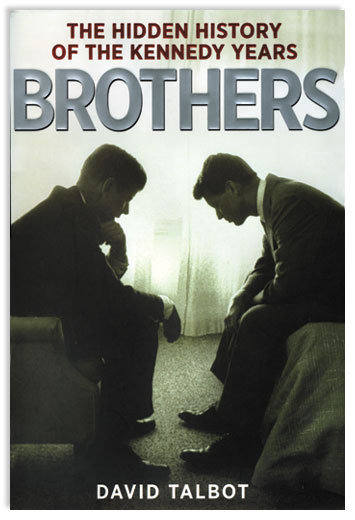 darkness, the title also refers to the men surrounding Jack and Bobby. The words come from Shakespeare, who described those who fought alongside Henry V at Agincourt: “We few, we happy few, we band of brothers.” To develop the bonds of such New Frontiersmen as Robert McNamara, Ted Sorensen, Richard Goodwin, Dave Powers, Ken O’Donnell, Walt Sheridan, and many others, Talbot weaves into his story numerous interviews with surviving “brothers.” If they are dead, he meets with their widows or children. These encounters add a personal plumb line to an otherwise dispassionate account. For example, the widow of Special Agent Kellerman tells Talbot her husband died “always accepting that there was a conspiracy.”
darkness, the title also refers to the men surrounding Jack and Bobby. The words come from Shakespeare, who described those who fought alongside Henry V at Agincourt: “We few, we happy few, we band of brothers.” To develop the bonds of such New Frontiersmen as Robert McNamara, Ted Sorensen, Richard Goodwin, Dave Powers, Ken O’Donnell, Walt Sheridan, and many others, Talbot weaves into his story numerous interviews with surviving “brothers.” If they are dead, he meets with their widows or children. These encounters add a personal plumb line to an otherwise dispassionate account. For example, the widow of Special Agent Kellerman tells Talbot her husband died “always accepting that there was a conspiracy.”
Talbot admires the “good” Bobby Kennedy, the one who sought “newer worlds” and quoted Aeschylus. He has reservations about the “bad” Bobby, who fronted for Sen. Joseph McCarthy and stalked “enemies within.” Talbot writes in the author’s note that he was “a 16-year-old campaign volunteer for Robert Kennedy when he was shot down in Los Angeles. For me, aggressively pursuing the hidden history of the Kennedy years was an attempt to find out where my country had lost its way.” Talbot does share with the conspiracists the sense that America’s decline and fall begins with the coup d’etat in Dallas and that the whitewash of the Warren Commission can be read as submission to men who would be kings, if not hit men.
According to Talbot, the black hole of the Kennedy presidency — the vortex down which Jack and Bobby are pulled — is the paramilitary failure at the Bay of Pigs, on Cuba’s southwest coast. In April 1961, three months after the Kennedys rode into Camelot, several thousand so-called Cuban freedom fighters, trained and equipped by the CIA, attacked the Cuban shore. According to the logic of the half-cocked invasion, once ashore the rebels were to be greeted as liberators and march on Havana, where they would topple Castro’s revolution. The Eisenhower administration had produced the low-budget thriller, but left it for airing during the new president’s prime time.
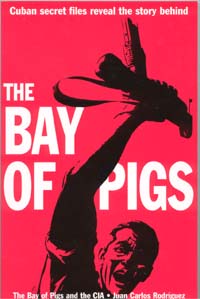 In turn, for John Kennedy the Bay of Pigs reaffirmed everything he suspected about military incompetence –something he may have witnessed firsthand on lonely patrols among the choppy waters around the Solomon Islands during World War II. He might have devoured James Bond novels and bought into the myths of the Green Berets, but he also had qualities, in the words of social critic Paul Fussell, of a “pissed-off infantryman,” a junior officer who thought the military brass had conducted the war to gloss their reputations — at the expense of those at the sharp end. Kennedy had little love for Castro or the Cuban revolution, but his personal after-action account of that battle was to conclude that the more dangerous foe was his own government’s militarism. Talbot describes JFK raging after the Bay of Pigs: “I have got to do something about those CIA bastards.” Later JFK said about the Army: “They always give you their bullshit about their instant reaction and split-second timing, but it never works out. No wonder it’s so hard to win a war.”
In turn, for John Kennedy the Bay of Pigs reaffirmed everything he suspected about military incompetence –something he may have witnessed firsthand on lonely patrols among the choppy waters around the Solomon Islands during World War II. He might have devoured James Bond novels and bought into the myths of the Green Berets, but he also had qualities, in the words of social critic Paul Fussell, of a “pissed-off infantryman,” a junior officer who thought the military brass had conducted the war to gloss their reputations — at the expense of those at the sharp end. Kennedy had little love for Castro or the Cuban revolution, but his personal after-action account of that battle was to conclude that the more dangerous foe was his own government’s militarism. Talbot describes JFK raging after the Bay of Pigs: “I have got to do something about those CIA bastards.” Later JFK said about the Army: “They always give you their bullshit about their instant reaction and split-second timing, but it never works out. No wonder it’s so hard to win a war.”
The Bay of Pigs debacle may have ended Kennedy’s confidence in the Joint Chiefs and their intelligence brethren, but it did not cover the family’s political side bets that Castro-baiting was a way to carry Florida’s electoral votes. Jack thought of Cuba as a “good, safe menace” to be exploited for political gain. He assigned Bobby to monitor Operation Mongoose, yet another back channel tuned to a frequency that might somehow overthrow Castro’s regime, partly with the help of Mafia assassins. One reason, according to Talbot, that Bobby never took his conspiracy investigations too far publicly was the chance that they might have revealed not just his role in the CIA’s Cuban adventures, but the cooperation of the same mobsters whom Bobby had devoted his career to investigating. In an interview, former Kennedy Justice official Nicholas Katzenbach tells Talbot: “I think the idea he could be responsible for his brother’s death might be the most terrible idea imaginable.”
One tragedy of the Kennedy assassination is that while one part of JFK’s administration is prosecuting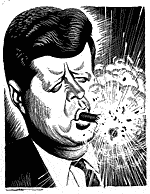 and deporting gangsters, other bureaus of the same government are recruiting exactly the same hit men to whack Castro. Indeed, Talbot concludes that one incentive for the mobsters to play Cuban games was the hope that it might earn them immunity from Robert Kennedy’s prosecutions. But its consequence was to align two rogue elements that hated the Kennedy administration — the anti-Castro wolf pack and the Mafia — and place them under the loose leadership of the CIA, which had its own elements that despised the president.
and deporting gangsters, other bureaus of the same government are recruiting exactly the same hit men to whack Castro. Indeed, Talbot concludes that one incentive for the mobsters to play Cuban games was the hope that it might earn them immunity from Robert Kennedy’s prosecutions. But its consequence was to align two rogue elements that hated the Kennedy administration — the anti-Castro wolf pack and the Mafia — and place them under the loose leadership of the CIA, which had its own elements that despised the president.
In a further tragic irony, after the Bay of Pigs, Jack had assigned Bobby to rein in the darker impulses of the CIA, where he would stop many mornings on the way to the Justice Department. Bobby, whom Adlai Stevenson nicknamed “the black prince,” was atop the house of cards in which both kings and jokers were wild.
According to Talbot, the Cuban missile crisis in October 1962 collapsed the deck. In exchange for the withdrawal of the Russian warheads, Kennedy pledged not to invade Cuba and decommissioned missiles in Turkey. Ironically, the confrontation brought Kennedy closer to Khrushchev, because both of whom felt themselves hostage to militarism. But it severed any civil relations the president had with certain intelligence and military circles. Air Force Gen. and Joint Chief Curtis LeMay said: “We had a chance to throw the Communists out of Cuba. But the administration was scared to death [the Russians] might shoot a missile at us.” Talbot develops this thesis: “For those militants who were part of the massive juggernaut organized to destroy the Castro regime, the peaceful resolution of the missile crisis was a betrayal worse than the Bay of Pigs.” The rogue elements, which Bobby and Jack thought could be maintained at a slow boil for political purposes, were suddenly steaming. Talbot concludes: “The assassination conspiracy against Castro — a three-headed Gorgon featuring the CIA on top, flanked by the Mafia and its Cuban accomplices — was again in motion.” Little wonder that on November 22, 1963, Bobby Kennedy called one of his own Cuban conspirators and said accusingly: “One of your guys did it.” Talbot adds that RFK might well have said: “One of my guys did it.”
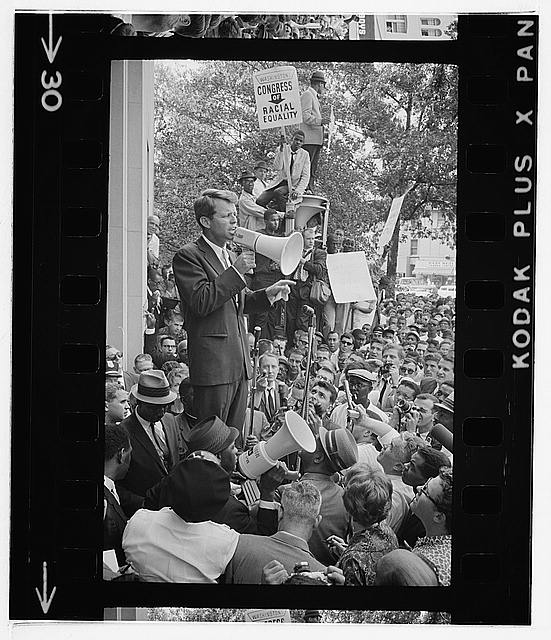 Reading about the assassination, I sometimes get the feeling that chartered buses were shuttling gunmen to Dallas because, by November 1963, so many diverse elements saw their survival in Kennedy’s demise. “In the weeks preceding Dallas,” Talbot writes, “he was informed of two serious assassination plots against him — one in Chicago and the other in Tampa. We can now conclude that Kennedy was, in fact, being methodically stalked in the final weeks of his life.” Talbot describes many of the groups harboring murderous grievances, such as a New Orleans mobster, Carlos Marcello, whom Bobby Kennedy was trying to deport: “Marcello told his visitors that he had made up his mind that President Kennedy had to go, but his assassination had to be arranged in such a way that a ‘nut’ would be set up to take the blame — ‘the way they do it in Sicily.'”
Reading about the assassination, I sometimes get the feeling that chartered buses were shuttling gunmen to Dallas because, by November 1963, so many diverse elements saw their survival in Kennedy’s demise. “In the weeks preceding Dallas,” Talbot writes, “he was informed of two serious assassination plots against him — one in Chicago and the other in Tampa. We can now conclude that Kennedy was, in fact, being methodically stalked in the final weeks of his life.” Talbot describes many of the groups harboring murderous grievances, such as a New Orleans mobster, Carlos Marcello, whom Bobby Kennedy was trying to deport: “Marcello told his visitors that he had made up his mind that President Kennedy had to go, but his assassination had to be arranged in such a way that a ‘nut’ would be set up to take the blame — ‘the way they do it in Sicily.'”
Talbot also delves into Kennedy family history to explain how some of these confrontations had evolved, writing about Joseph Kennedy Sr.’s liquor dealings with the mob and Bobby’s later crusade against racketeering: “In his role as the scourge of organized crime, Bobby had found a way to combine his father’s raging will with his mother’s religious purity. But Joe Kennedy knew how dangerous an enterprise this was.” Talbot interviews the author Gore Vidal, who was related to Jacqueline Kennedy and was a friend of Jack’s: “The tragedy was Joe Kennedy getting a stroke,” Vidal said. “He could have settled the problem with the Mafia in two minutes.”
Because Robert Kennedy was not a witness to his brother’s killing, he did not testify before the Warren Commission, officially called The President’s Commission on the Assassination of President Kennedy, which emphasizes the extent to which Lyndon Johnson handpicked its members and dictated its conclusions. Publicly, Bobby accepted its findings. Privately, he agreed with the thoughts of his Harvard roommate. Ken O’Donnell called the Warren Commission “the most pointless investigation I’ve ever seen.”
Among the many flaws in the composition and mandate of the Warren Commission, the most glaring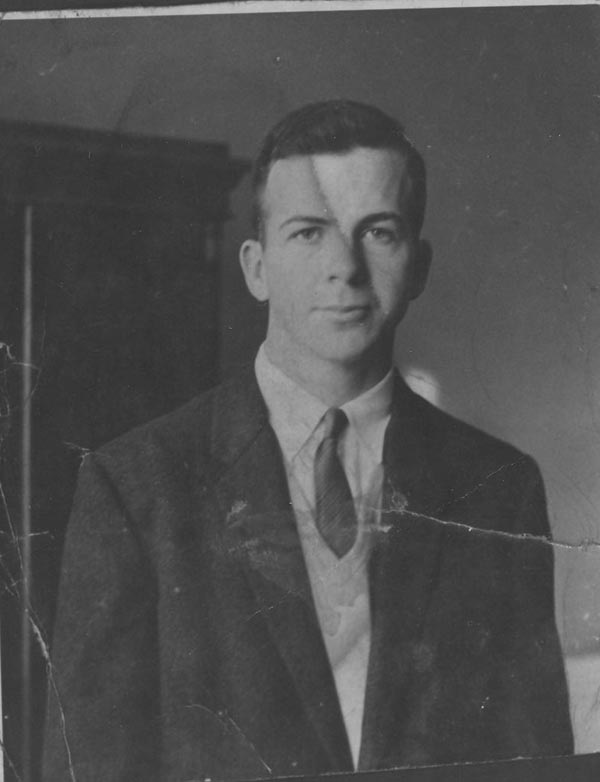 is that the committee lacked investigative powers. It was at the mercy of the CIA and the FBI to conduct its investigation, and both organizations had a lot to hide. The CIA, for example, refused to reveal the extent to which it had collaborated with organized crime to try to assassinate Castro. Nor did it reveal the files it had on contacts with Lee Oswald, dating to his time in the Soviet Union. Likewise, the FBI had similar interests and files on Oswald’s bizarre movements and affiliations. Talbot writes: “In the days following the assassination, [CIA Director John] McCone would conclude that there had been two shooters in Dallas, in striking contrast to the official version of the crime of a lone gunman, which was being ardently promoted by Hoover and the FBI.” In their own ways, for their own institutional reasons, both agencies preferred cover-up over truth in answering the question that National Book Award novelist, Don DeLillo, raises in Libra: “Who arranged the life of Lee Harvey Oswald?”
is that the committee lacked investigative powers. It was at the mercy of the CIA and the FBI to conduct its investigation, and both organizations had a lot to hide. The CIA, for example, refused to reveal the extent to which it had collaborated with organized crime to try to assassinate Castro. Nor did it reveal the files it had on contacts with Lee Oswald, dating to his time in the Soviet Union. Likewise, the FBI had similar interests and files on Oswald’s bizarre movements and affiliations. Talbot writes: “In the days following the assassination, [CIA Director John] McCone would conclude that there had been two shooters in Dallas, in striking contrast to the official version of the crime of a lone gunman, which was being ardently promoted by Hoover and the FBI.” In their own ways, for their own institutional reasons, both agencies preferred cover-up over truth in answering the question that National Book Award novelist, Don DeLillo, raises in Libra: “Who arranged the life of Lee Harvey Oswald?”
Despite being “one of the first — and among the staunchest — believers in a conspiracy,” Robert Kennedy did little to encourage those challenging the lone-gunman orthodoxy. He had little time for New Orleans District Attorney Jim Garrison, who was, according to Talbot, “shining light on a crucial corner of the conspiracy — a world of zealous CIA plotters, Cuban expatriates, far-right militants, and mercenaries, where President Kennedy was considered a traitor.” Bobby’s gumshoe, Walt Sheridan, did not trust or like Garrison, who placed Oswald, during the summer of 1963, in the company of such Camp Street lowlifes as Guy Banister and David Ferrie. Bobby may also have resented Garrison for disrupting Kennedy’s grand plan, to go public with his conspiracy conclusions only after he had become president. In turn, Garrison could never understand Bobby’s reluctance to join forces and track down the assassins. “If they killed my brother,” Garrison said, “I’d be in the alley waiting for them with a steak knife, not sitting at the Kennedy Center watching a ballet with them.”
Robert Kennedy, like other conspiracists, did not believe that his government could ever tell the truth about JFK’s assassination. Hence his decision, according to Talbot, to seek the presidency, in part so that he could mobilize the full powers of the executive branch to chase assassins. Nevertheless, when he was finishing his term as attorney general and later in the Senate, Robert showed little passion for bringing government power against those he privately suspected of complicity in the crime. (His initial timetable was to run in 1972, nine years after Dallas.) Talbot writes wistfully that had Bobby reconciled even a little his hard feelings toward Lyndon Johnson, and had the two men worked together, it might have been possible to come closer to the truth about what happened in Dallas. Talbot believes Johnson had too many conflicts of interest to delve deeply into the assassination. The murder — in his home state, in his presence — had made him president of the United States. Talbot speculates that Johnson now faced the prospect that the truth might force his hand to confront Russia or Cuba with nuclear weapons. Better, in that case, to have Earl Warren round up a usual suspect.
As admirable and articulate as I find Talbot’s writing and sense of history, on a personal level I wish I did not have to confront the conclusions in Brothers. I was 9 years old when President Kennedy was killed. I had seen him in person a month before and found it difficult to reconcile the memory of his bright red hair and wide smile with the grainy images of sudden death beamed up from Dallas. Similarly, I was 14 — about the same age as Talbot — when Robert Kennedy was assassinated. Several months before he was shot, I had met him in a small group, the only boy in a group of League of Women Voters. He took a few minutes to chat with me about school and sports. I got the news of his shooting on my bedside radio one hot summer morning, as I was dressing for school. Since then, I have never needed to be reminded of either assassination.
After the deaths of the two Kennedys, I managed to steer clear of various assassination theories. I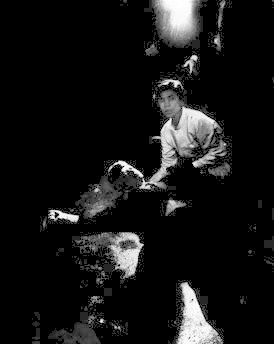 own few of the 2,000 books on the events in Dallas. Without a lot of facts, I accepted Oswald’s lone-gunman guilt as an article of faith, though if ever asked about the Warren Commission, I compared the probability of its conclusions to that of the Immaculate Conception. I managed, nevertheless, to avoid dwelling on the SBT (Single Bullet Theory or the so-called Magic Bullet), Hoover’s evidence of a second Oswald, the strange CIA disinformation of David Phillips, or the congressional transcripts of gangland’s Santos Trafficante’s testimony. I did, however, visit Dallas on occasion, and sometimes drove through Dealey Plaza. I went to the Texas School Book Depository Museum, inspected the sniper’s lair of scattered boxes, and imagined the sight lines of a Grassy Knoll Shooter. The visits to Dealey Plaza made me think Oswald could never have killed Kennedy from his depository window (it’s a long way, over trees, into a moving a car), but that a fatal shot from the knoll lined up both with autopsy forensics, the Zapruder film, and eyewitness testimony.
own few of the 2,000 books on the events in Dallas. Without a lot of facts, I accepted Oswald’s lone-gunman guilt as an article of faith, though if ever asked about the Warren Commission, I compared the probability of its conclusions to that of the Immaculate Conception. I managed, nevertheless, to avoid dwelling on the SBT (Single Bullet Theory or the so-called Magic Bullet), Hoover’s evidence of a second Oswald, the strange CIA disinformation of David Phillips, or the congressional transcripts of gangland’s Santos Trafficante’s testimony. I did, however, visit Dallas on occasion, and sometimes drove through Dealey Plaza. I went to the Texas School Book Depository Museum, inspected the sniper’s lair of scattered boxes, and imagined the sight lines of a Grassy Knoll Shooter. The visits to Dealey Plaza made me think Oswald could never have killed Kennedy from his depository window (it’s a long way, over trees, into a moving a car), but that a fatal shot from the knoll lined up both with autopsy forensics, the Zapruder film, and eyewitness testimony.
With Talbot’s book in hand, I have also been forced to think about his conclusions and, by extension, those of the thousands of conspiracists: If more than three shots were fired in Dallas, then the president was attacked by at least two gunmen, and thus was the target of a concerted effort to overthrow the head of government. Further, if the Warren Commission whitewashed evidence of rebellion, then the U.S. has been living for almost 50 years on the stage sets of democracy, unwilling to confront such banana republican principles as the belief that electoral happiness can be found with a warm gun.
A subtext in Talbot’s argument is that John Kennedy was killed for his opposition to the militarism that led to Vietnam, Granada, Iran-Contra, and finally the Sunni Triangle of Iraq. Obviously the mixed record of JFK’s foreign policy — with its deployment of special forces and covert operations in places like Indochina and the Caribbean — contradicts the thesis that Kennedy was killed only because he believed in pacifism. But it is impossible to read Talbot’s account of the Bay of Pigs or the Cuban missile crisis and believe that JFK would have given the Joint Chiefs a blank check in Vietnam. He quotes a 1954 statement that Kennedy made on intervention: “I am frankly of the belief that no amount of American military assistance in Indochina can conquer an enemy which is everywhere and at the same time nowhere, an ‘enemy of the people’ which has the sympathy and covert support of the people.”
The fact that I am loitering with skepticism near the Grassy Knoll or reviewing the confessions of E. Howard Hunt and James Files does not mean I am ready to blame JFK’s death on the mob, the CIA, Lyndon Johnson, anti-Castro elements, J. Edgar Hoover, Clay Shaw, right-wing extremists, or Lee Oswald. (Sadly, we need all the government documents and yet another investigation, with the most modern forensics. This time the Internet guys can run it.) At the same time, Talbot’s book has let me embrace the empiricism of the conspiracists, who bring to the democracy something absent in the Warren Commission: common sense and inquiring minds. It’s too bad their energy cannot be harnessed to understand the murky shadows of the USA Patriot Act, the budget deficit, the war in Iraq, and Social Security’s impending bankruptcy. [via THE TEXAS OBSERVER]
Matthew Stevenson is a contributing editor to Harper’s Magazine. His books can be purchased at www.odysseusbooks.com. He is the cohost of The Travel Hour, a radio program.

